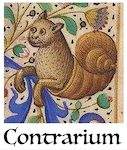Sweden. Day 40. Epilogue.
So this is it. Now I am on the train from Stockholm to Copenhagen, and from there to Germany, finally leaving Sweden.
It was hard to leave, and not just because I loved the country. I actually missed my train, so I had a lot of trouble to extend my stay in Stockholm for one more day to catch the next train which left only the next morning. But staying longer was not much of an advantage, as the last day I spent mostly just going around town trying to solve all kinds of issues related to the trip, such as finding another place to stay and buying a new bag and having the Covid test required for entry into Germany, which was not that easy to find in Stockholm and cost the astounding amount of 50 euros! Absurd! Almost the same I paid for spending the night in a nice studio apartment in Stockholm! On top of that, I also had to buy a new train ticket as they did not accept the old one anymore. I think that in the last two days in Stockholm, I spent twice the money than I spent during the whole month at Björkö!
Not all was bad, however. I was actually lucky enough to find a place in Gamla Stan, or the Old Town, which is the most beautiful part of Stockholm, in the island of Stadsholmen, with preserved old buildings and crooked cobblestone streets. The rest of the city is not as beautiful. Stockholm, like Uppsala, destroyed a lot of its old buildings in a renovation process in the 1960s, changing almost everything to modern, ugly brutalist buildings. Can you imagine! The Swedes were not bombed to almost total destruction like Germany, they did not have Communism and its rebuilding in “socialist” style like Russia or Poland, and yet they simply chose to destroy most of their old buildings instead of renovating them. A real shame, as the Old Town is really beautiful, and perhaps all Stockholm could look like that today.
I also visited the Viking Exhibition at the History Museum, which was very interesting. They had a lot of artifacts, from glass cups to swords to bracelets and even skeletons and parts of a ship. Most of the artifacts were found in burial sites, as people were buried with their belongings. There is a lot of jewelry and decorations, some with Pagan motifs, some with early Christian motifs. Many people don’t know, but the Viking age and the Christianization of the country were almost simultaneous, so for quite some time Pagan and Christian beliefs lived side by side, and not always necessarily competing, as even adherents of the new religion would still keep a few of the old practices. The main practical differences were related to the disposal of the bodies — as Pagans preferred to cremate their corpses, and Christians to bury them. Also, the Pagans performed animal sacrifices (mostly dogs, cats, and chickens), which were burned together with the deceased, which was not allowed by the new religion. The number and type of animals sacrificed depended on the status of the person; there is a record of one family being cremated together with 25 different animals.
Christianization was slow, and at first there were no churches, which were established only in the 11th century. People just practiced at home. But one interesting display at the exhibition is a VR reconstruction of an 11th century viking church.
Another myth is that the vikings were all warriors. While warriors were highly valued and remained at the top of the social system, most people had other occupations: farmers, artisans, shopkeepers, welders. The society was divided in three castes: noblemen, free men, and thralls (or slaves). Thralls were either prisoners captured in war, people who incurred in debt, or were simply born into that class, as the system was hereditary. However, thralls could be given freedom by their masters, or eventually buy their own freedom. If you killed a thrall, you had to pay its master about 200 grams of silver, as it was considered property (if you killed a freeman, you had to pay 2 kg of silver to their relatives). Eventually, more and more thralls obtained their freedom, either by purchasing it or on the initiative of their masters, the church or the secular authority. The system was completely abolished in the 14th century.
In conclusion: Stockholm was nice, but in the end, all big cities resemble a bit each other, and if my monthly stay had been in town, I think I wouldn’t have loved it as much as I loved Björkö. As I grow old, I tend to appreciate more and more the silence and natural peace of the countryside or small villages, and less and less the hustle and bustle of big cities.
This is the end, beautiful friend. What to make of this experience? I suppose it will still take some time to assimilate the meaning of it all, but I loved mostly being in an isolated place, in the middle of nature and taking long walks in the forest. I loved having the time and concentration to focus on a couple of artistic projects. I loved being able to explore and discover more about Sweden and Swedish people, and what makes them the way they are.
Did I discover the secrets of the Scandinavian soul? Not really. But I learned to appreciate the polite, gentle people of Sweden and their well-organized society. Perhaps I will be back one day — ideally in summer, as in some ways it must be a completely different experience.
There will always be time to go back to Sweden. At least, that’s the hope.
My thanks (tack!) and appreciation to all the people of Sweden I met on the way, and to the few people who read these daily posts and followed part of this journey with me.
Hejdå!






